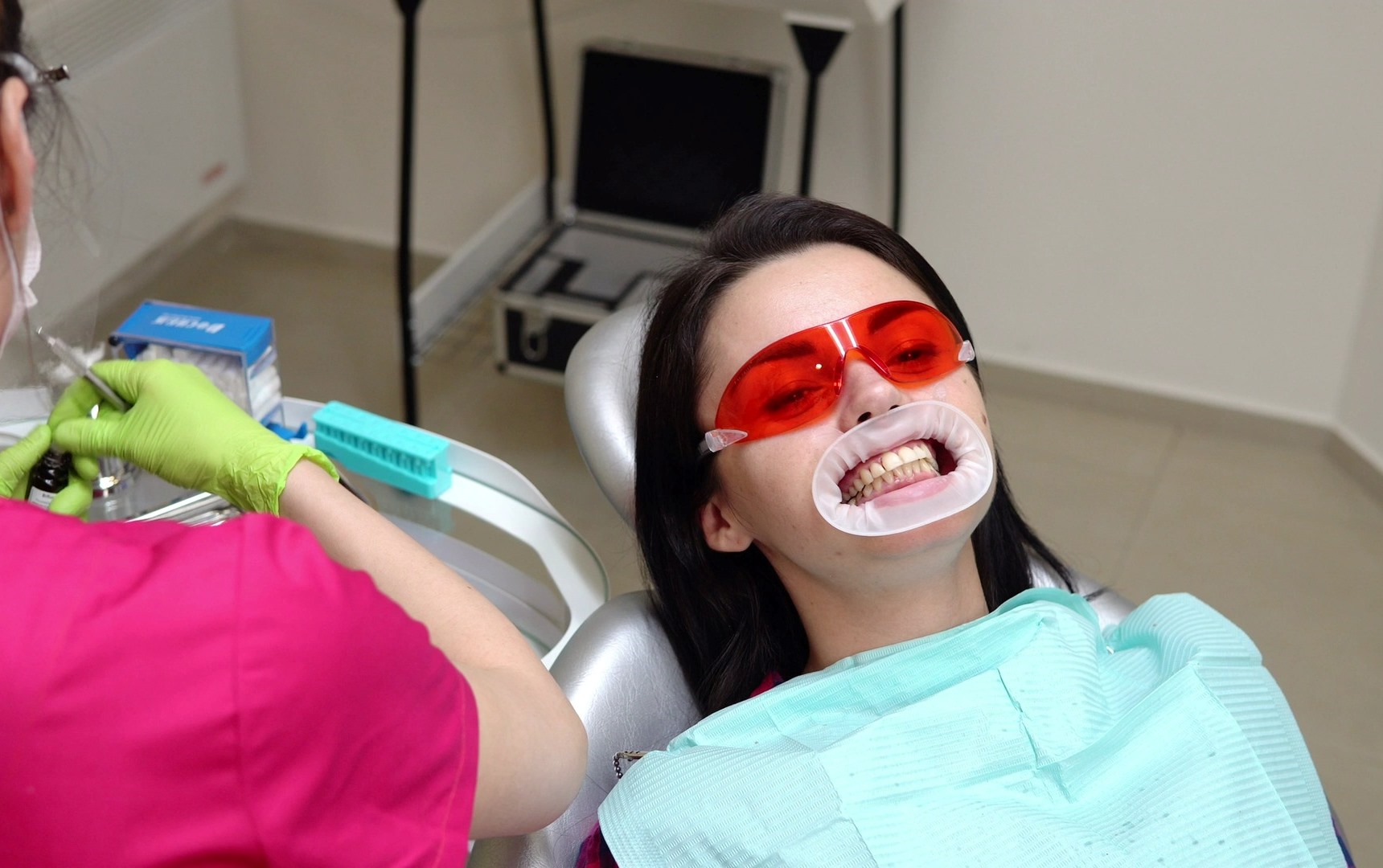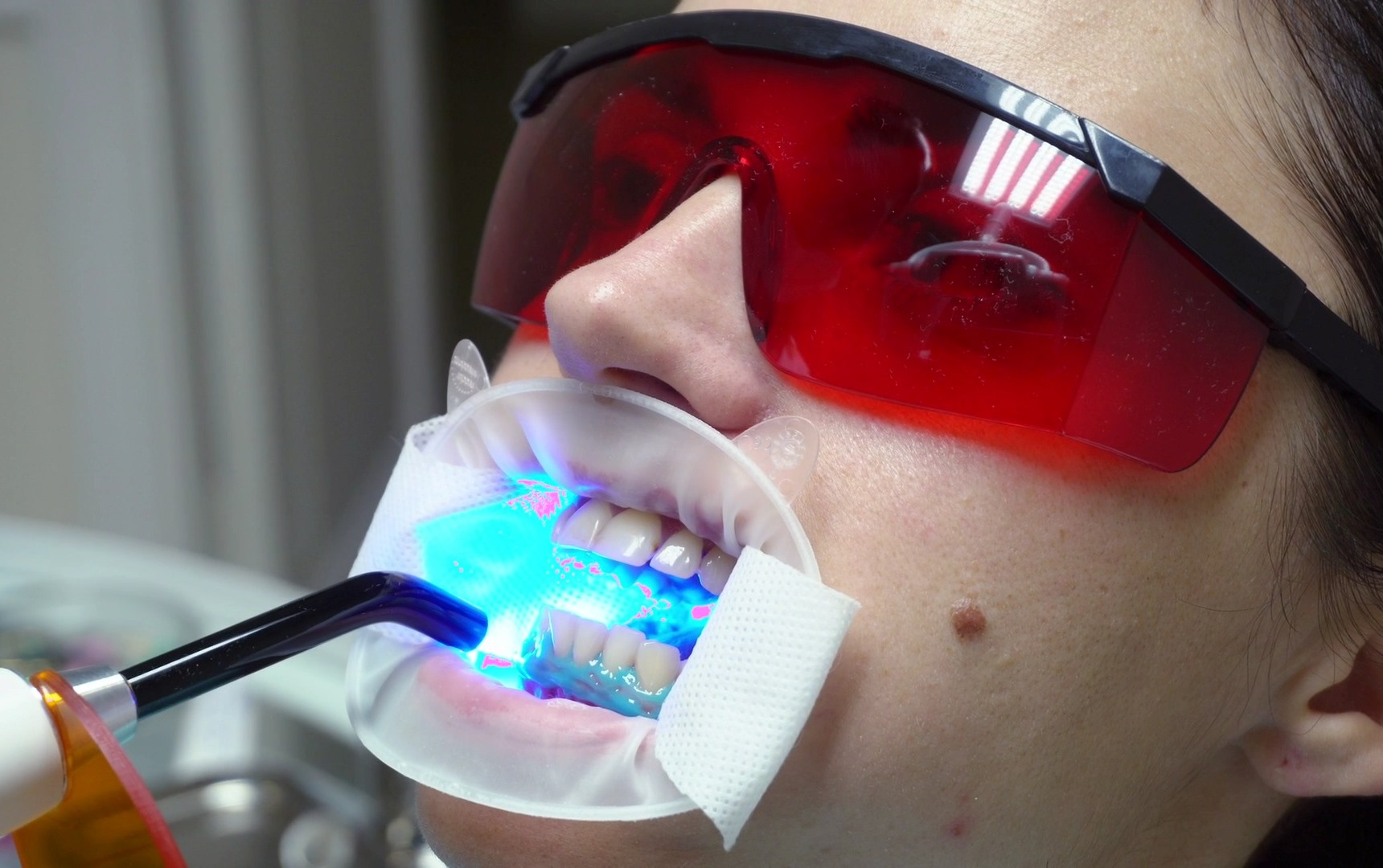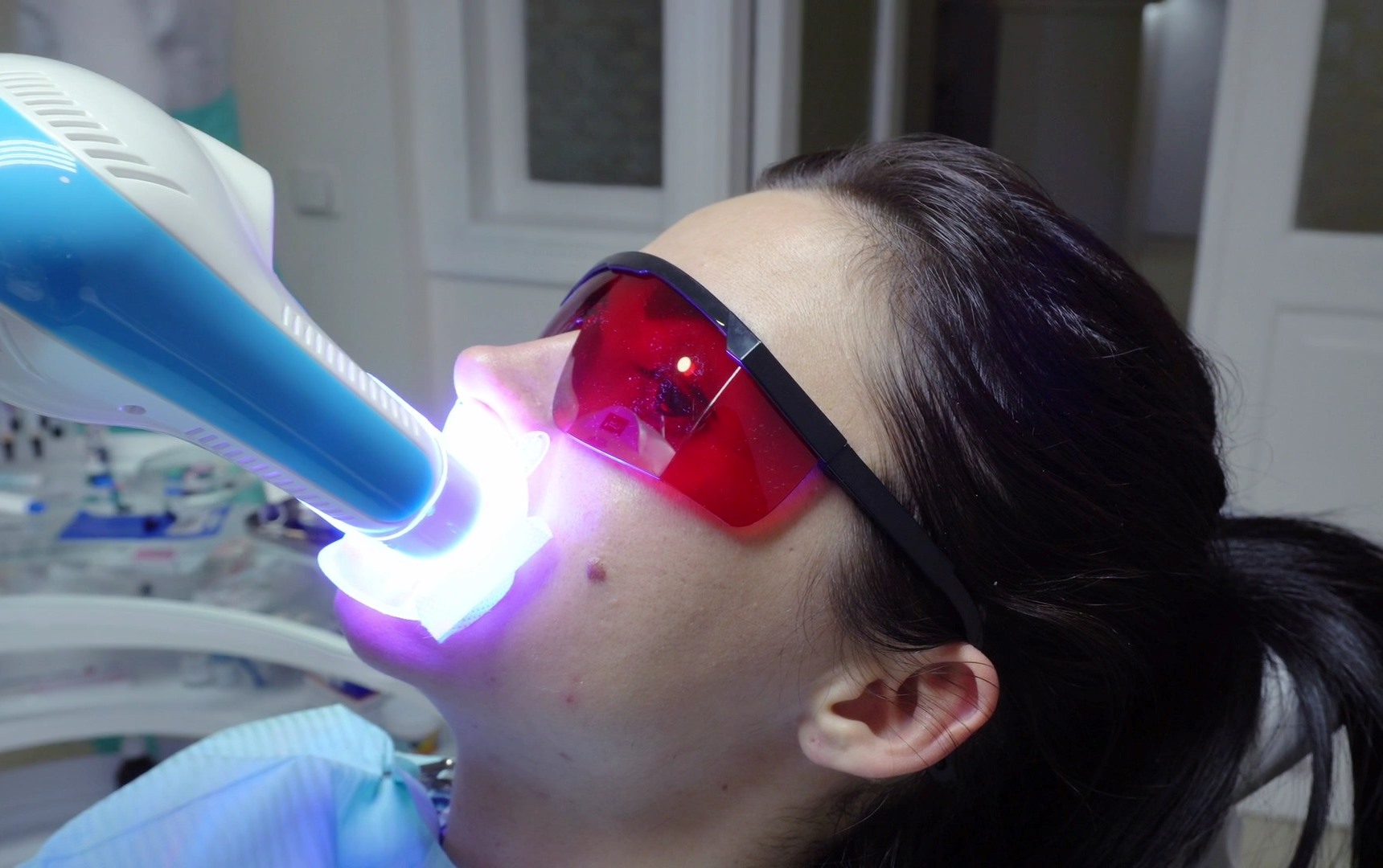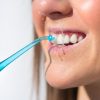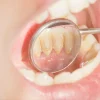Get information about Teeth Whitening treatment with the explanation of specialist dentist Merve Özkan Akagündüz.
Teeth Whitening Bleaching
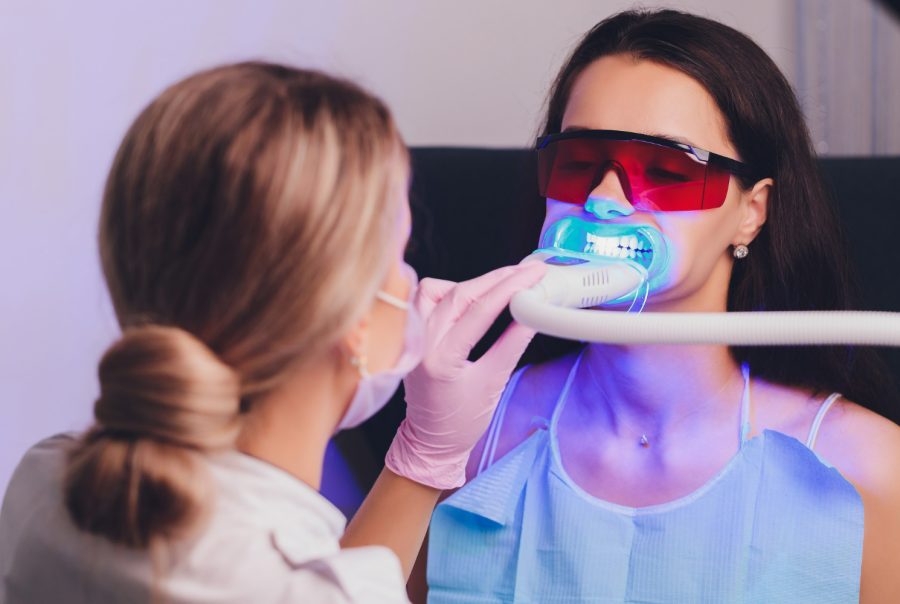
Teeth Whitening Treatment, Doredent İstanbul
The secret of a beautiful smile is smooth, white and shiny teeth. Teeth whitening procedures are often used to have white and bright teeth. Before teeth whitening, determining which method the patient needs is essential for success. First of all, the source of tooth discoloration is investigated.
Tooth discolorations are divided into two main groups: internal and external. Internal discolorations are related to tooth structure. Excessive fluoride consumption and antibiotics taken during the tooth formation process can also cause internal discoloration. The majority of patients benefit from teeth whitening procedures. However, it is not suitable for use in individuals with defects in the enamel structure, exposed root surfaces and chronic sensitivity.
External colorations are caused by coloring factors such as tea, coffee and cigarettes. Its formation can be prevented by dental care and cleaning procedures. External discolorations on the teeth are largely eliminated by scaling and subsequent polishing. However, if the natural color of the tooth is yellow, cleaning procedures are not sufficient. At that time, whitening procedures are used.
Teeth whitening methods are divided into two groups: office type and home type. Office whitening is performed by a professional dentist in a clinical environment. First of all, the current color of the tooth is selected and noted with the patient before the procedure. The patient’s gums are then isolated with the help of a barrier and the whitening agent is prevented from irritating the gums. The whitening agent is then applied to the teeth in accordance with the instructions for use. The process continues until the desired whiteness level is reached. Mostly the total duration does not exceed 60 minutes. If the patient feels sensitivity, the process can be interrupted. Most of the time, up to 2-3 shades of lightening of tooth color can be achieved even in a single session. It is a method that provides fast and effective results. If applied correctly, it does not cause any harm to teeth and gums. It is generally a painless procedure. It does not require local anesthesia. A slight sensitivity may occur after, if not during, the procedure, and this will resolve spontaneously within a few days. For the permanence of the process, it is beneficial to stop consuming colored food for a while.
For home whitening, first measurements are taken from the patient’s lower and upper jaw. A personalized teeth whitening plate is prepared. The feature of this plate is that it fits perfectly into the patient’s mouth, as well as having reservoir spaces on the front surfaces of the teeth where the whitening agent will be applied. The dentist selects the appropriate teeth whitening agent for the patient, adjusts its dosage, and explains how to use it and what to pay attention to. For the specified period of time, the patient starts using the whitening agent by applying it to the plaques. Mostly, overnight use is sufficient. Application is usually continued for about 1 week. If sensitivity develops, fluoride applications can be used.
Office type teeth whitening is a more effective method than home type whitening. Generally, it is recommended that patients first undergo office whitening and then continue with home whitening to increase the permanence of the resulting whiteness.
Teeth Whitening Prices
The Turkish Dental Association has determined the office type single jaw teeth whitening procedure fee for 2024 as 5,935.00 TL, excluding the whitening agent fee and including VAT. You can use the teeth whitening prices calculation tool to see the prices of teeth whitening procedures performed in our clinic.
Things to Consider After Teeth Whitening
Sensitivity in teeth and gums is a common situation we encounter after teeth whitening. It should not be forgotten that these problems will pass within a few days. Dentists can apply fluoride when necessary. If the sensitivity is excessive, comfort can be increased by taking painkillers. During this process, extremely hot and cold food and drinks should be avoided.
It is recommended not to consume foods and beverages such as tea, coffee, tomatoes, red wine, tomato paste and cherries, especially for the first week after the whitening process. Smoking and tobacco use should be stopped. These are very important for the permanence of the result obtained.
How Long Does Teeth Whitening Last?
The longevity of teeth whitening results depends on various factors, particularly those related to individual habits and lifestyle choices. The consumption of tea, coffee, and tobacco can cause staining on the teeth’s surface. Frequent exposure to these substances naturally reduces the longevity of the achieved whiteness.
After office-based whitening, patients are advised to pay attention to their diet for the first three weeks. During this period, it is recommended to avoid foods with tomato sauce, drinks with coloring agents like turnip juice, and frequent consumption of tea and coffee. Regular and diligent oral hygiene practices, such as brushing and maintaining oral care, are crucial for maintaining the whiteness.
If patients follow their dentist’s recommendations, the results of the whitening procedure can last up to 2-3 years. If necessary, at-home whitening agents can be used periodically after office-based whitening to extend the whiteness for many more years.
Are There Any Side Effects of Teeth Whitening?
Post-whitening, some patients may experience sensitivity to hot or cold. This is a normal and expected occurrence. While it can be bothersome for the first few days, the intensity of sensitivity generally diminishes over time. Using desensitizing toothpaste, fluoride applications, and mild pain relievers can help alleviate discomfort during this period.
Office-based teeth whitening is highly effective, often resulting in a 2-3 shade improvement in a single session. The procedure does not damage the teeth but may cause irritation to the gums. Therefore, the gums are protected with a barrier before starting the procedure to prevent any issues.
Teeth whitening is effective only on natural teeth. It does not change the color of fillings, crowns, or other dental restorations. Therefore, it is advisable to undergo whitening before any prosthetic treatments if necessary.
The durability of the whitening effect depends on one’s oral hygiene and dietary habits. Excessive consumption of products like tea, coffee, and tobacco can lead to re-staining and discoloration.
In some cases, a single whitening session may not be sufficient. Factors such as tooth color, structure, and anatomical characteristics are unique to each individual, and not everyone’s teeth whiten to the same extent. Additional sessions may be required in such situations.
When Should Teeth Whitening Not Be Performed?
If there are teeth that need treatment due to decay or other issues, it is recommended to address these problems first, as teeth whitening is primarily an aesthetic procedure. Resolving existing health issues takes precedence.
For individuals with inadequate oral hygiene, teeth whitening is unlikely to have satisfactory and lasting results. The care shown post-whitening is crucial for success.
Teeth whitening is not recommended for pregnant or breastfeeding women, nor for children under the age of 16.
Are Whitening Toothpaste Harmful?
Whitening toothpastes contain abrasive particles that can clean the surface stains, creating a whitening effect. However, continuous or long-term use is not recommended. Occasional use is more appropriate. Otherwise, the abrasive particles may damage the tooth surface.
This content has been translated and adapted for dental practice.
Teeth Whitening Procedure
Examination, Preparation, Treatment Stages
Examine 0:37
First of all, the patient is examined and if there is tartar, it is cleaned and gel is applied.
Preparation 0:22
Before the teeth whitening process, a barrier is applied to the gums.
Whitening Stage 0:16
After applying the medication, the process is completed with the application of UV light.
Merve Özkan Akagündüz
I was born in Edirne in 1988. In 2007, I began my master’s degree in Dentistry at Istanbul University (Çapa) Faculty of Dentistry and graduated in 2012.
In 2014, I started my specialization in the Department of Orthodontics at Süleyman Demirel University Faculty of Dentistry. In 2019, I earned the title of Orthodontist and was appointed to Çorlu ADSM, where I worked as an Orthodontic Specialist Dentist from 2019 to 2022.
As of 2024, I have been continuing my practice in my own clinic.



